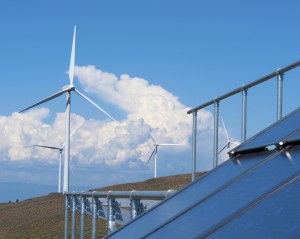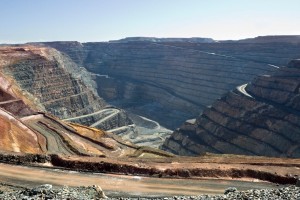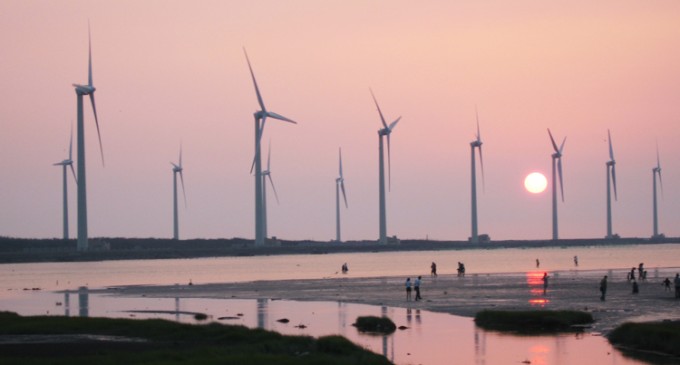“At the moment the public only sees the tip of the iceberg of off-grid projects for the mining projects. This segment  has developed very quietly and quickly lately,” comments Thomas Hillig, CEO and Founder of THEnergy Consulting. “Many projects have really advanced in the last 12 months. And we would have already seen many more completed projects if the low oil and diesel prices and turbulences on the commodity markets had not slowed down projects.”
has developed very quietly and quickly lately,” comments Thomas Hillig, CEO and Founder of THEnergy Consulting. “Many projects have really advanced in the last 12 months. And we would have already seen many more completed projects if the low oil and diesel prices and turbulences on the commodity markets had not slowed down projects.”
Hillig is focused on working with renewables and finance experts to accelerate the uptake of renewables for mining microgrids including one international renewable finance partner who is looking to provide EUR 100 million for off-grid projects for mines. Hillig will provide details on this investment commitment at the upcoming Energy and Mines London Summit on Jan 28-29 in London, UK. This week, he offers insights on market developments and critical steps for reducing investor risk for off-grid projects for mines.
Q: Can you please update us on the work you are doing to support off-grid projects in the mining sector by partnering with an international renewable energy finance company?
 A: We started the cooperation with a strategic analysis of the solar and wind-diesel hybrid markets and a workshop about the market-entry. From an investor’s perspective it is important to understand both, the expected returns and the all potential risks. Hybrid projects are different from standard grid-connected projects, especially compared to feed-in tariff projects. THEnergy has developed tools to visualize these risk for an investment portfolio. Some of the risk can be reduced through a clever set-up of the portfolio. Right now, we are looking for projects and are in a pre-screening phase. We speak to project developers, EPCs, component suppliers such as storage manufacturers and above all to mining companies.
A: We started the cooperation with a strategic analysis of the solar and wind-diesel hybrid markets and a workshop about the market-entry. From an investor’s perspective it is important to understand both, the expected returns and the all potential risks. Hybrid projects are different from standard grid-connected projects, especially compared to feed-in tariff projects. THEnergy has developed tools to visualize these risk for an investment portfolio. Some of the risk can be reduced through a clever set-up of the portfolio. Right now, we are looking for projects and are in a pre-screening phase. We speak to project developers, EPCs, component suppliers such as storage manufacturers and above all to mining companies.
Q: What sort of response have you received from the mining and renewables sector?
There is much more feedback from the mining and from the renewables sector than we expected. Financing is very often the bottleneck in off-grid projects. During our search and screening processes, we have been looking at projects at many different stages. It starts even in a pre-project phase when mining companies express their interest to change to renewable energy. We then evaluate if it makes sense for us to take part in the project development already at this early stage. In some cases, it can make sense. Some industrial off-takers, especially those who are not very familiar with low-maintenance solar and wind power generation, want to know at a very early stage who will be their contract partner and who will actually generate the power and sell it to them over a period of 15-25 years.
Very often the projects are much more developed. Sometimes local EPCs have developed them and want to build them. Some of them do not have the financial strength to close the deal with some of the big mining groups. In this case, we can offer to assist by restructuring the project and including larger EPCs. Ideally, the local company and the new EPC form a consortium, in which the local player is still responsible for a big part of the project value chain, but the projects become more attractive for investors.
Then we also see fully developed projects which are often even in a tender process. Off-grid projects for mines have also been identified and reported by component manufacturers – above all storage manufacturers. We were surprised to see many storage suppliers actively participating in the sales and development process.
 Q: What does this tell you about the state of off-grid projects for mines and the critical role that supportive financing can take in accelerating project uptake?
Q: What does this tell you about the state of off-grid projects for mines and the critical role that supportive financing can take in accelerating project uptake?
A: At the moment the public only sees the tip of the iceberg of off-grid projects for the mining projects. This segment has developed very quietly and quickly lately. Many projects have extremely advanced in the last 12 months. And we would have already seen many more completed projects if the low oil and diesel prices and turbulences on the commodity markets had not slowed down many projects.
The technology is there, the business case is still excellent for many off-grid projects. The mining industry might not be the industry that moves first and fast. Having a look at many of these projects we see, however, that mining companies have been a good sparing partner for renewable energy players. This results in a large number of sophisticated projects, which is a pre-requisite for external financing. For a thorough market penetration, business innovations are a main driver that accelerate the development. Innovation such as leasing and different types of PPAs such as synthetic PPAs or resource swaps can drive the business forward. Normally the finance sector learns rather quickly. A better understanding of the business results in a lower evaluation of the risks. That makes hybrid solutions more attractive and speeds the development up.
Q: What are you looking forward to at the Energy and Mines London Summit on Jan 28-29?
A: I am looking forward to seeing more finance players enter the ring. For me, it is very obvious that this market  segment is developing quickly. If we talk today about funds that invest EUR 100 million and more in off-grid projects for industrial off-takers, there is clearly capital.
segment is developing quickly. If we talk today about funds that invest EUR 100 million and more in off-grid projects for industrial off-takers, there is clearly capital.
With the insights from the last project screening phase for our cooperation partner, I can say that much more capital will be needed soon. The Energy and Mines London Summit will be at the same time an excellent platform for clearing latent misunderstandings between mining, renewable energy and finance sectors. Some players indeed have unreasonable expectations. A better understanding of each other’s position can very often improve the situation largely and speed up the process even more. Finally, one of the most important aspects of these conferences is networking and personal connecting with some of the industry’s leaders.

